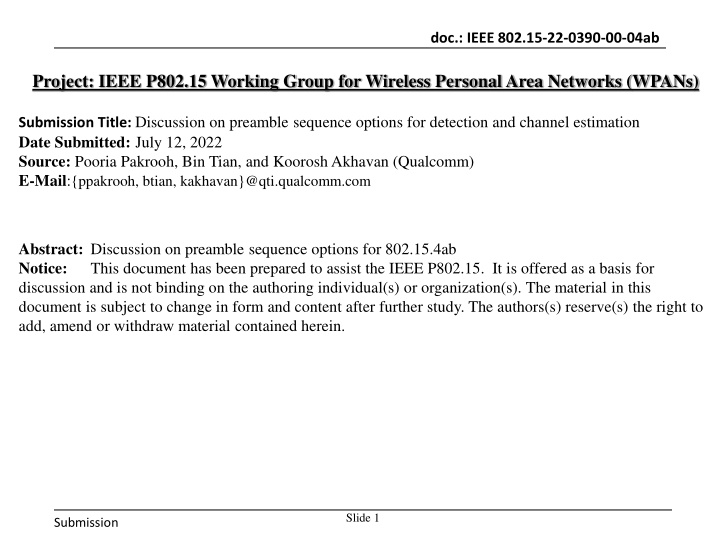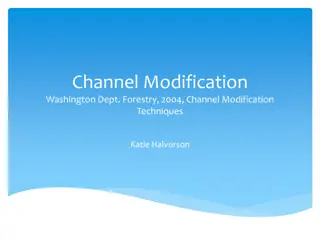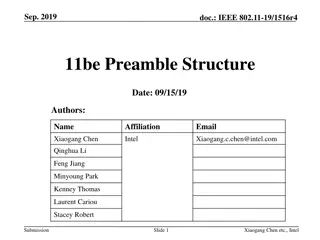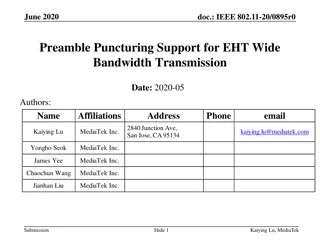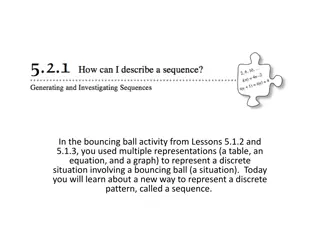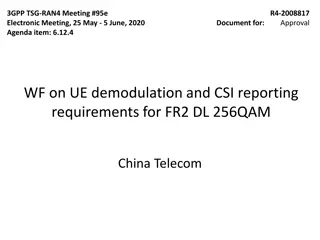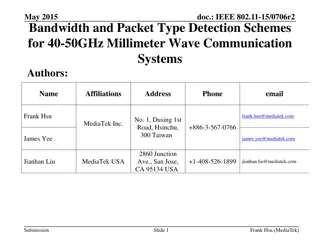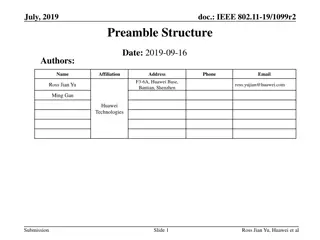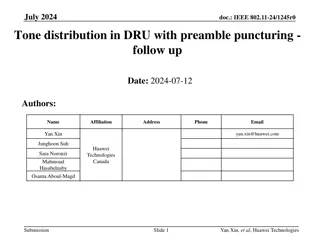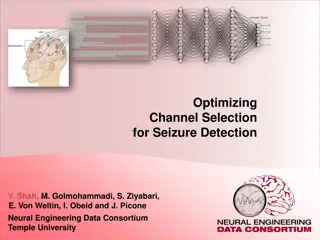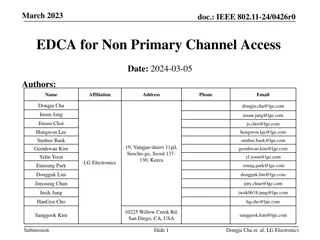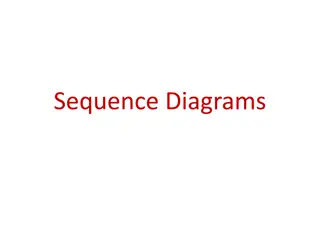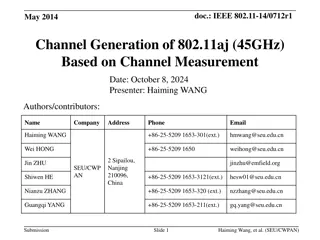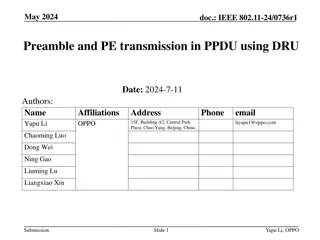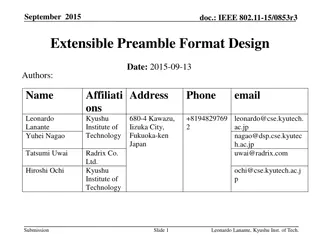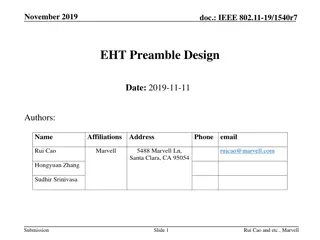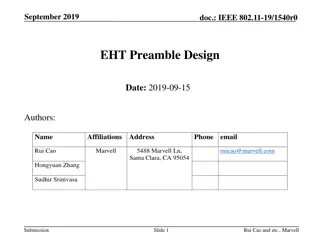Discussion on Preamble Sequence Options for Improved Detection and Channel Estimation
This document discusses various preamble sequence options for improving packet detection and channel estimation in IEEE 802.15.4ab, focusing on auto-correlation and cross-correlation properties of Golay, M, and Ipatov sequences.
Download Presentation

Please find below an Image/Link to download the presentation.
The content on the website is provided AS IS for your information and personal use only. It may not be sold, licensed, or shared on other websites without obtaining consent from the author.If you encounter any issues during the download, it is possible that the publisher has removed the file from their server.
You are allowed to download the files provided on this website for personal or commercial use, subject to the condition that they are used lawfully. All files are the property of their respective owners.
The content on the website is provided AS IS for your information and personal use only. It may not be sold, licensed, or shared on other websites without obtaining consent from the author.
E N D
Presentation Transcript
doc.: IEEE 802.15-22-0390-00-04ab Project: IEEE P802.15 Working Group for Wireless Personal Area Networks (WPANs) Submission Title:Discussion on preamble sequence options for detection and channel estimation Date Submitted: July 12, 2022 Source: Pooria Pakrooh, Bin Tian, and Koorosh Akhavan (Qualcomm) E-Mail:{ppakrooh, btian, kakhavan}@qti.qualcomm.com Abstract: Discussion on preamble sequence options for 802.15.4ab Notice: This document has been prepared to assist the IEEE P802.15. It is offered as a basis for discussion and is not binding on the authoring individual(s) or organization(s). The material in this document is subject to change in form and content after further study. The authors(s) reserve(s) the right to add, amend or withdraw material contained herein. Slide 1 Submission
doc.: IEEE 802.15-22-0390-00-04ab PAR Objective Proposed Solution (how addressed) Safeguards so that the high throughput data use cases will not cause significant disruption to low duty-cycle ranging use cases Interference mitigation techniques to support higher density and higher traffic use cases Other coexistence improvement Comparison of some of the preamble proposals in 15.4ab, aimed to improve coexistence Backward compatibility with enhanced ranging capable devices (ERDEVs) Improved link budget and/or reduced air-time Additional channels and operating frequencies Improvements to accuracy / precision / reliability and interoperability for high-integrity ranging Reduced complexity and power consumption Hybrid operation with narrowband signaling to assist UWB Enhanced native discovery and connection setup mechanisms Sensing capabilities to support presence detection and environment mapping Low-power low-latency streaming Higher data-rate streaming allowing at least 50 Mbit/s of throughput Support for peer-to-peer, peer-to-multi-peer, and station-to-infrastructure protocols Infrastructure synchronization mechanisms Submission
doc.: IEEE 802.15-22-0390-00-04ab Introduction Motivated by future dense deployment of UWB devices, coexistence of multi-user preamble sequences becomes important. o Current 4z Ipatov sequences provide perfect periodic auto-correlation properties. o The cross-correlation properties of preamble sequences become more important as the number of codes (users) is expected to increase. Multiple new preamble sequences have been proposed for 15.4ab in [1]-[4]. o Golay complementary sequences Pair of complementary sequences Zero auto-correlation zone around the peak Introducing gap of variable size reduces cross-correlation o M-sequences Bipolar sequences Quasi-optimal periodic autocorrelation o CZC and SZC sequences Zero-sum autocorrelation zone with CFO (SZC) or without CFO (CZC) The goal of this presentation is to compare auto-correlation and cross-correlation of Golay, M and Ipatov sequences for packet detection and channel estimation. Slide 3 Submission
doc.: IEEE 802.15-22-0390-00-04ab Evaluation Scenarios We are going to compare the auto-correlation and cross-correlation performance in two different phases of receiver processing o Packet detection phase o Channel estimation phase Significance of auto-correlation and cross-correlation are different for each phase. The assumption of frequency error is also different in each phase. Packet detection phase: o CFO can be large, long coherent combining is not possible. o Large cross-correlation over short sequence can cause false alarm. Periodic auto-correlation does not matter as much. Channel estimation phase: o In auto-correlation analysis, CFO of signal is small at the receiver after frequency correction. However, the CFO for the interference may still be larger, since it is from a different transmitter. o High auto-correlation and cross-correlation can affect the channel estimation. Slide 4 Submission
doc.: IEEE 802.15-22-0390-00-04ab Detection: Auto-Correlation Results A pair of sequences of each type, M-sequence and Ipatov sequences of length=127, Golay sequence of length 128 (Gaps length=(32,32)). Spreading factor=4, Symbol duration=1us for all sequences. Packet detection, with CFO up to 40 ppm. Coherent combining within a symbol, non-coherent detection across symbols. All the correlation values are normalized to AC(t=0,CFO), for each specific CFO. Observations: o Auto-Correlation is independent of number of symbols. o Ipatov has relatively better performance with and without CFO. CFO up to 40 ppm CFO=0 Ipatov -16.2 -inf Auto-correlation (dB) M-Sequence -15.9 -42.1 Golay Sequence (32,32) -12.9 (-19.9*) -14.5 (-inf*) * Within lag interval [1, ????+ ????/2], in the synchronized case (CFO=0), Golay sequence has zero auto- correlation, and for CFO up to 40 ppm, auto-correlation is around -19.9 dB. Slide 5 Submission
doc.: IEEE 802.15-22-0390-00-04ab Detection: Cross-Correlation Results CFO up to 40 ppm. Coherent combining within a symbol, non-coherent detection across symbols. Large cross-correlation affects detection false alarm rate. max ?,???1?? ?,???1 min For each CFO, max cross-correlation is normalized to the worst auto-correlation as: ????????????= ???2?? 0,???2 where ???1is the frequency offset between interfering device and receiver, and ???2 is the frequency offset between transmitter and receiver. Observations: o Golay sequence with equal gaps has bad cross-correlation properties and it is not a good candidate. o When required number of symbols for packet detection is small (mid to high SNR scenario), Ipatov and M sequences have lower cross-correlation than Golay sequence with unequal gaps. o When required number of symbols for packet detection is large (low SNR scenario), then Golay sequence with unequal gaps has lower cross-correlation. Cross-correlation (dB), CFO up to 40ppm Cross-correlation (dB), CFO=0 Single Symbol 4 Symbols 16 symbols Single Symbol 4 Symbols 16 symbols Ipatov -13.3 -13.3 -13.3 Ipatov -18.1 -18.1 -18.1 M-Sequence -13.9 -13.9 -13.9 M-Sequence -17.5 -17.5 -17.5 Golay Sequence (32,32) -4.7 -4.7 -4.7 Golay Sequence (32,32) -6 -6 -6 Golay Sequence (32,33) -6.2 -12.6 -19.2 Golay Sequence (32,33) -7.5 -14.2 -20.7 Slide 6 Submission
doc.: IEEE 802.15-22-0390-00-04ab Channel Estimation: Auto-Correlation Results A pair of sequences of each type, M-sequence and Ipatov sequences of length=127, Golay sequence of length 128 (Gaps length=(32,32)), and (Gaps length=(32,33)). Spreading factor=4, Symbol duration=1us for all sequences. Channel estimation; small residual CFO error after correction. In this analysis, we assume CFO=0. All auto- correlation values are normalized to AC(t=0,cfo=0). 16 symbols. Coherent processing over multiple symbols. No non-coherent combining. Observations: o Auto-Correlation is independent of the number of symbols. Auto-correlation (dB) Ipatov -inf M-Sequence -42.1 Golay Sequence (32,32) -14.5 (-inf*) * For Golay sequence, zero autocorrelation zone within a window of 48 samples. Slide 7 Submission
doc.: IEEE 802.15-22-0390-00-04ab Channel Estimation: Cross-Correlation Results A pair of sequences of each type, M-sequence and Ipatov sequences of length=127, Golay sequence of length 128 (Gaps length=(32,32)), and (Gaps length=(32,33)). Spreading factor=4, Symbol duration=1us for all sequences. For cross-correlation computation, there is potentially large CFO error due to signal coming from a different transmitter. All cross-correlation values are normalized to AC(t=0,cfo=0). Coherent processing over 16 symbols. No non-coherent combining. Cross-correlation (dB) One Symbol (CFO=0ppm) 16 Symbols (CFO=0ppm) One Symbol (CFO up to 40ppm) 16 Symbols (CFO up to 40ppm) Ipatov -18.1 -18.1 -14.7 -18.1 M-Sequence -17.5 -17.5 -15.5 -17.5 Golay Sequence (32,32) -6 -6 -6 -6 Golay Sequence (32,33) -7.5 -24.1 -7.5 -24.1 Slide 8 Submission
doc.: IEEE 802.15-22-0390-00-04ab Correlation with Random Sequence Correlation with random sequence for the same configuration of the previous slides. All cross-correlation values are normalized to AC(t=0,cfo=0) Coherent processing across one or 16 symbols. Interference most likely comes from the STS or data segment instead of the preamble of other UWB transmissions. The cross-correlation values below give a lower bound on where the focus of preamble cross- correlation analysis should be. 16 Symbols (CFO up to 40ppm) Ipatov -21.3 M-Sequence -22.4 Golay Sequence (32,32) -22.1 Golay Sequence (32,33) -21.2 Slide 9 Submission
doc.: IEEE 802.15-22-0390-00-04ab Preamble Sequence Considerations In the packet detection phase, cross-correlation is important, as it has direct impact on detection false alarm rate, while auto-correlation is not that critical. In the channel estimation phase, auto-correlation is important, as the sidelobe of auto- correlation affects sensing and ranging accuracy. Cross-correlation is also important as it affects the channel estimation quality. o Interference most likely comes from the STS or data segment, instead of the preamble of other UWB transmission. Other factors to consider when studying preamble sequence o Per-pulse power Ipatov sequence and Golay sequence (with gap) have 50% zeros. M-sequence is binary +/ 1. For the same average power of a symbol, Ipatov and Golay-with-gap need 3 dB higher per pulse power relative to M-sequence. Receiver processing complexity Ipatov and M-sequences require regular correlation processing. To benefit from Zero Auto-Correlation Zone (ZACZ) property for Golay sequence, the receiver needs to remove sidelobe outside ZACZ window around the strongest peak. Besides the additional complexity, it may also put a limit at the delay spread range (sensing range). Receiver needs to handle different sequence lengths due to unequal gaps. o Slide 10 Submission
doc.: IEEE 802.15-22-0390-00-04ab Concluding Remarks In this contribution, we compared auto-correlation and cross-correlation performance for different sequences in packet detection and channel estimation phases. Ipatov sequence and M-sequence have reasonable performance in different phases. Golay sequence with equal gaps has high cross-correlation and may not be a good candidate. Golay sequence with unequal gaps may have better cross-correlation when accumulating over large number of symbols. o Extra processing is required to handle correlation outside of zero autocorrelation zone. Slide 11 Submission
doc.: IEEE 802.15-22-0390-00-04ab References [1] 15-21-0377-04ab Preamble codes for Data Communications [2] 15-22-0243-04ab Golay Complementary Sequences: Preamble Construction for UWB Ranging beyond 4z Ipatov [3] 15-22-0280-04ab Deterministic STS for Sensing Applications [4] 15-22-0178-04ab A novel channel sounding sequence Slide 12 Submission
doc.: IEEE 802.15-22-0390-00-04ab Appendix Slide 13 Submission
doc.: IEEE 802.15-22-0390-00-04ab Auto-Correlation for Detection CFO up to 40 ppm, worst CFO case plotted CFO=0 Carrier frequency = 8GHz Submission
doc.: IEEE 802.15-22-0390-00-04ab Cross-Correlation for Detection 16 symbols. Non-coherent detection. CFO up to 40 ppm, worst CFO case plotted CFO=0 Carrier frequency = 8GHz Submission
doc.: IEEE 802.15-22-0390-00-04ab Auto-Correlation for Channel Estimation Submission
doc.: IEEE 802.15-22-0390-00-04ab Cross-Correlation for Channel Estimation 16 symbols. Coherent detection. CFO up to 40 ppm, CFO=0 has the highest Cross Correlation CFO=0 Carrier frequency = 8GHz Submission
